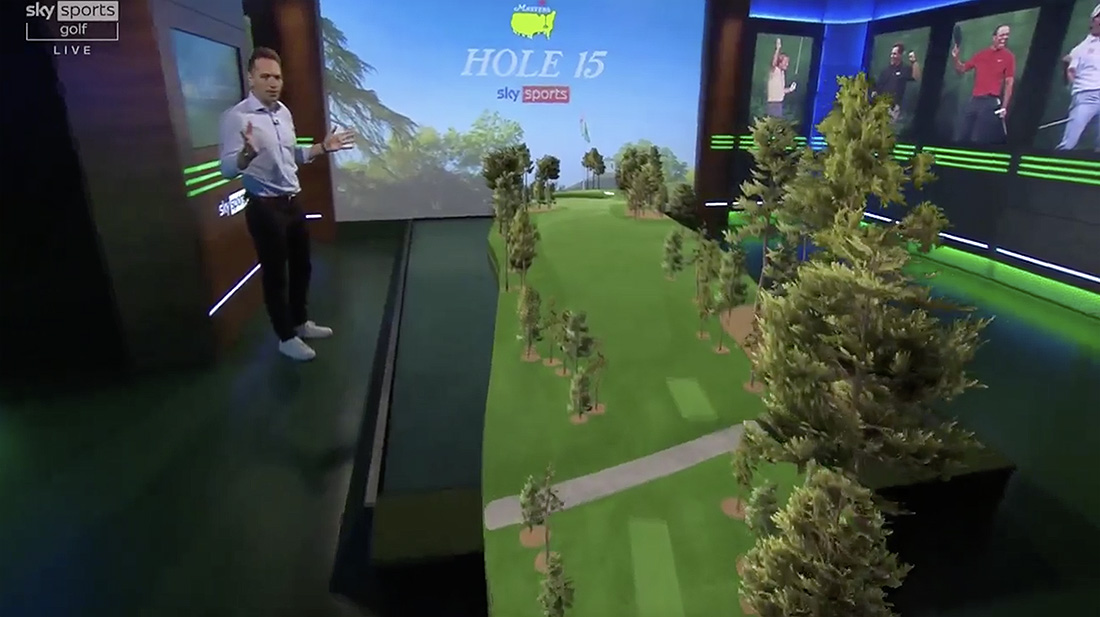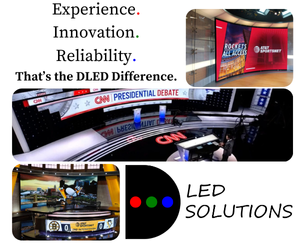Column: What U.S. broadcasters can learn from Europe about AR

Subscribe to NCS for the latest news, project case studies and product announcements in broadcast technology, creative design and engineering delivered to your inbox.
A few years ago, the industry was buzzing about how augmented reality was coming soon to a newscast near you.
Fast-forward to today, and adoption rates in the U.S. remain fairly low. When looking at any tech spend, broadcasters generally ask four questions: Will it increase revenue, save money, add viewers or take viewers away from the competition? Hitting one of these is good. AR can help broadcasters hit all four.
Viewer attention is fragmented, and the COVID-19 pandemic has compounded this as families work and school from home. Distractions are everywhere, which means news broadcasts need bolder, more immersive graphics to keep audiences engaged. In the United States, AR is usually sponsored by advertisers, leading to brash graphics that feel like ads. By contrast, EMEA news outlets view AR as a way to add value and inform the audience.
In the past, the news was shared by a person behind a desk. Then came 2D graphics and green screens.
Now, it’s LED walls and real-time camera tracking, including tools that let broadcasters visualize live AR, real-time CGI environments and set extensions directly in-camera. This isn’t just about taking a flat object and making it 3D – AR opens up entirely new creative avenues for teams to share the news that matters to their audience.
Across Europe and the Middle East, AR in the news has become so common and seamless that audiences may not even recognize it. Used to insert data and real-time graphics that are accurate up to the second, AR is not a gimmick but a tool that helps broadcasters break down complex stories for their viewers. If a picture is worth 1,000 words, imagine the value of AR.
In 2008, BBC News made one of their first forays into AR with their coverage of the David Cameron/Gordon Brown election. Over the years, the BBC went from Peter Snow a.k.a “Mr. Swingometer” with a cardboard cutout and a wooden stick that moved to show vote tallies to convincingly realistic AR graphics. And every four years since, they mark another key milestone in the evolution of AR.
With AR, reporters could “walk through” the wreckage of the Beirut explosion… from a studio.
Real-time camera tracking is so flexible, it works no matter where you are. Inside or outside, on a busy street corner or an isolated field, news teams can always have AR at their fingertips. Plus, at a time when it’s not necessarily safe to send reporters out into the world, camera tracking and virtual sets mean you can easily swap out environments that look 100% real, while keeping talent safe in-studio. Teams can scan oft-used locations – from city streets to sports stadiums – and use them again and again, without the usual travel time and costs.
It’s different in the U.S. Many broadcasters here have told us they see AR as a gimmick, not a value add. And it’s true that most examples in the U.S. are gimmicky. But when we bring U.S. and European broadcasters together, they start to realize the vast potential that AR holds.
Take The Weather Channel, for instance, who effectively use AR to showcase the very real dangers of natural disasters and storm surges.
There’s a reason for the phrase, “Show, don’t tell.” You can tell someone, “There will be 50-foot swells.” But most people have trouble envisioning not only what that actually looks like, but also how it will affect their lives. By showing AR storm waters rising around a reporter until they cover her head, the Weather Channel has likely saved lives – and created something so striking and different it led to millions of views, social shares and serious buzz.
IBM has reported that while TV viewing time is declining faster than expected, local TV news remains a key information source for most viewers. But to reach new audiences, news teams need to expand the type of content they create. A recent study from The Weather Company showed that 34% of viewers would tune into local news more often if AR were used, and 64% would stay tuned in longer if they knew AR was coming in the next segment.
Embracing AR and CG also helps broadcasters appeal to a younger audience, a key demographic largely ignored by TV news. The oldest members of Gen Z are now in their mid-20s, very politically active and extremely tuned into what’s happening in the world around them. These viewers don’t want to watch someone droning at them from behind a desk. They’ve been brought up on video games and Marvel movies, and expect to see immersive content on all their screens. But many broadcasters are torn between reaching out to younger viewers and alienating older viewers. You don’t have to choose. Upgrade your studio, and you can produce better, more informative news segments and interactive online content, so you can reach every type of viewer.
Many teams we speak to, particularly in regional news, look at AR and think “This is out of my league.” But that’s not necessarily true. Technological gains – including the rise of virtual production techniques due to the COVID-19 pandemic – mean a lower cost of entry and more flexibility. Integrating camera tracking systems used to be a major undertaking, but recent advances in real-time tracking and game engines have opened AR use up to smaller budgets and regional affiliates.
Broadcasters like the BBC now use AR for everything from creating elaborate sets for “Strictly Come Dancing” to World Cup and election coverage. Those paving the way are seeing increases in both audience size and engagement, with views and shares in the millions. The fact is, AR in news broadcasting could be as game-changing as radio or television once were. It’s a major opportunity for U.S. broadcasters, and those who embrace it early will reap the benefits.
Subscribe to NCS for the latest news, project case studies and product announcements in broadcast technology, creative design and engineering delivered to your inbox.




tags
Augmented Reality, Augmented Reality for Broadcast, Augmented Reality Sets, Camera Tracking, Immersive Augmented Reality, markerless tracking, Ncam, Phil Ventre, the weather channel, virtual set design, Virtual Sets, weather channel
categories
Augmented Reality, Virtual Production and Virtual Sets, Creative Freedom, Featured, Virtual Sets, Voices